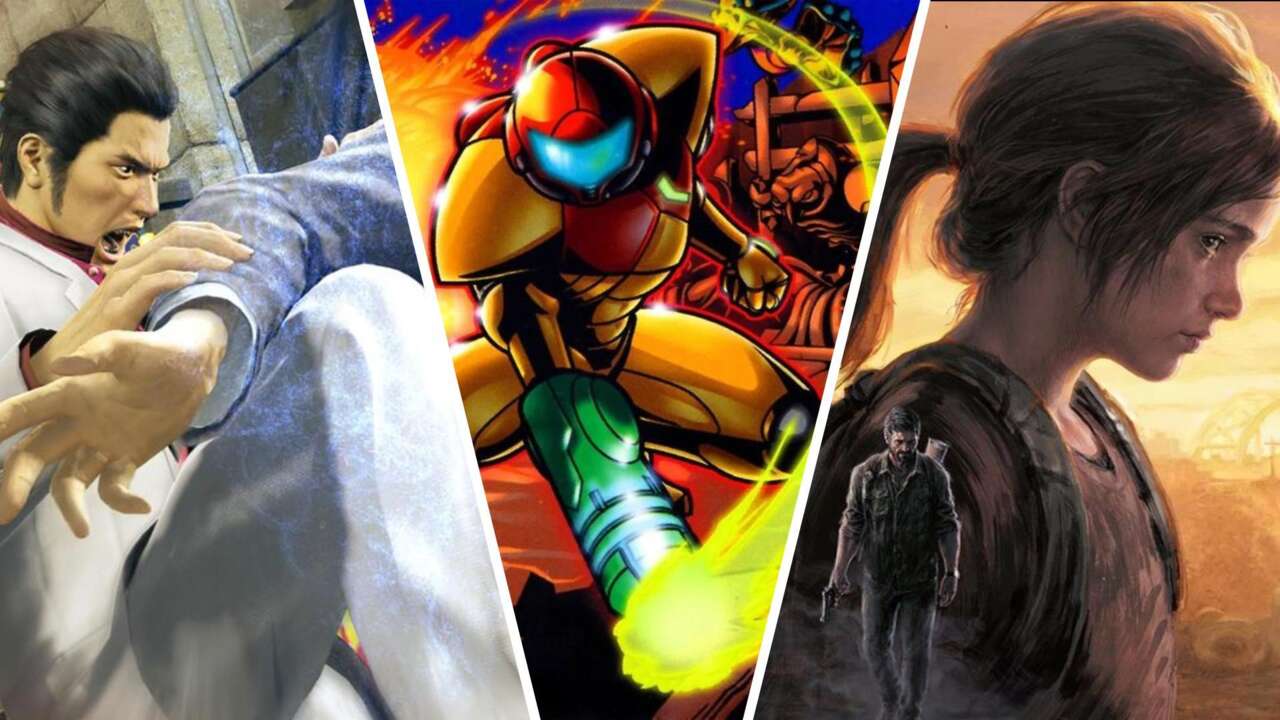Pole Model: How Namco’s Pole Position Revolutionised Racing
Namco’s Pole Position is one of the most influential racing games ever made. It was a true trailblazer and an ’80s arcade titan. Four decades down the track, however, and the primitive buzz of its wailing engines has become a distant whimper. Indeed, its 40th anniversary just zipped by with barely a blip.
And that’s just too bad, because before Out Run, before Ridge Racer – and before Hard Drivin’, Virtua Racing, Daytona USA, and all the racers we consider the current kingpins of the driving genre today – there was Pole Position.
In the very beginning, racing arcade games were electro-mechanical – similar in spirit to the video games that would later usurp them, but driven by physical components. Early examples like 1941’s Drive-Mobile saw players manoeuvring a toy car left and right on a painted, spinning drum, and 1959’s Mini Drive – from long-defunct Japanese arcade game manufacturer Kasco – asked players to navigate a toy car along a rolling conveyor belt. However, in the late 1960s Kasco and Sega pioneered a new spin on electro-mechanical arcade racing and introduced video projection elements with Kasco’s Indy 500 and Sega’s Grand Prix. Namco responded with a string of its own with Racer in 1970, Formula-X in 1973, and F-1 in 1976.
With oval racetracks and competitors beamed onto a screen courtesy of a clever combination of lamps, painted spinning discs, and tiny, mounted car models, these games may look primitive by modern standards but they ultimately laid the bedrock for the look and feel video games would later successfully emulate (so well, in fact, that electro-mechanical racing games were instantly rendered obsolete by games like Pole Position).
The bleeding-edge of arcade racing almost 50 years ago.
(Source: bandainamcoent.co.jp, The International Arcade Museum)
Pole Position wasn’t the first car racing video game to emerge in arcades; a number of notable examples predate it. For instance, Atari’s top-down Gran Trak 10 in 1974 – which featured a white, car-shaped blob weaving its way through a ribbon of dots – may not look like much but is regarded as the first-ever car racing video game. Atari’s first-person view Night Driver followed in 1976, alongside Sega’s Road Race. Sega’s Monaco GP in 1979 and Namco’s Rally-X in 1980 were important racers in their own right, as was Sega’s colourful and revolutionary Turbo in 1981. However, it was the 1982 arrival of Pole Position that would prove to be the most seismic.
“
Created by Galaxian designer Kazunori Sawano, Tank Battalion designer Shinichiro Okamoto, and Sho Osugi, who was behind Namco’s electro-mechanical racers of the seventies, Pole Position changed racing games. It was unlike any racing game to date, with tremendously advanced graphics for the time – thanks to its revolutionary 16-bit microprocessor – and even had synthesised speech.
You know they’re serious about the curves when they use that many exclamation marks.
Eschewing the top-down approach, Pole Position’s perspective placed players directly behind the car and established the now-ubiquitous chase cam view we associate with racing games. It’s certainly fair to argue Turbo’s trailing third-person view is also worth noting here, but Turbo’s camera was mounted far higher and more distant than the view in Pole Position.
Pole Position was also the first racing video game to feature a real-life track, Fuji Speedway, which at that point had recently hosted the dramatic finale of the now iconic 1976 F1 season – where James Hunt won the championship from Niki Lauda by a single point. The flat and simple layout, flanked by lush green grass, bears little resemblance to the real thing – but with Mount Fuji in the backdrop, it was good enough. It was also the first to require players complete a qualifying lap before being able to race; you had to finish in around 70 seconds to even be eligible to enter the race itself.
“
It’s here Pole Position stumbles slightly, particularly through a modern lens. Quick to punish the slightest wrong move, Pole Position was a notoriously tough experience on the original non-self-centring wheel, and remains so emulated on contemporary controllers. Even designer Sho Osugi himself has previously conceded he found it very difficult, which feels a little like sitting down to watch Twin Peaks with David Lynch and having him turn to you and admit he’s a bit confused.
One wrong move and you were an explosion, which made qualifying for the race itself alive quite a task.
We could probably stick the boot in a little for the in-game advertising too, of which Pole Position was a very early proponent. Pole Position’s Fuji was heavily flanked with billboards for a handful of real-world, kid-friendly brands like… Marlboro and Martini – so even if you left the cabinet without a new-found love of motor racing, you might still come away feeling like a smoke and an apéritif. To be fair to Namco, this era of F1 is so synonymous with cigarette sponsorship it’s a surprise the cars weren’t required to be fitted with ashtrays. Fortunately, parents in the ’80s were probably too pre-occupied with Satan hiding messages on heavy metal records to notice Namco filling its pioneering racer with alcohol and tobacco ads.
Those corners are so tight I can see your… well, if you know, you know.
First released in Japan on September 16, 1982, Pole Position arrived in the US (where it was distributed by Atari) and Europe later that same year. It was an instant hit. Not only was Pole Position the highest-grossing arcade game in Japan for 1982, it was a huge smash around the world. With earnings of millions of dollars every week in the US alone, Pole Position became the highest-grossing arcade game in North America in 1983 and 1984. Pole Position picked up several awards at the then-recently established Amusement & Music Operators Association Game Awards, where it scooped gongs for Most Played Video Game and Most Popular Arcade Game. The criteria for those awards may sound bafflingly similar, but keep in mind Pole Position crushed the most-played pinball machine and the most-played pool table to secure the latter. Sucks to be you, Cougar Model 32. It’s a pool table. It also just turned 40.
“
Pole Position quickly migrated to home systems like the Atari 2600 and Commodore 64, and was followed by a sequel, a board game, and a short-lived, 13-episode cartoon series that shared approximately… nothing in common with the game (which you’ll know, if you’ve been paying attention, was about F1 racing and not a family of… crime fighters with talking cars). Then that was it. Pole Position was succeeded at Namco by the Final Lap series, and Pole Position was relegated to irregular appearances in Namco arcade compilation packages. But a thing isn’t beautiful because it lasts.
It might have been a little presumptuous on Namco’s part to name its racer after the spot you only earn by being faster and better than everyone else, but it’s hard to argue that back in 1982 Pole Position didn’t deserve it.
Luke is Games Editor at IGN’s Sydney office. You can chat to him on Twitter @MrLukeReilly.
Check out our Latest News and Follow us at Facebook
Original Source







